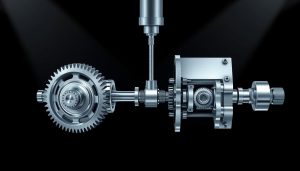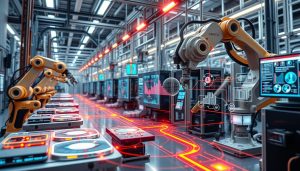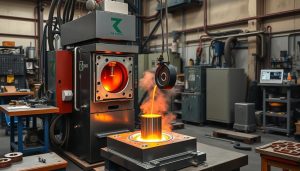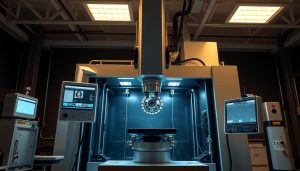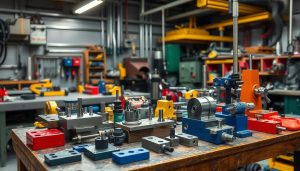In the world of manufacturing, choosing between CNC machining and casting is key. These methods shape and form raw materials in different ways. Each has its own benefits for various industries. But which one is right for your project? Let’s explore CNC machining and casting to find the best metal fabrication method.
Key Takeaways
- CNC machining and casting are two prominent metal fabrication methods with distinct advantages.
- Understanding the nuances of each process is essential in selecting the right approach for your project.
- Factors like cost, production speed, precision, and material options play a crucial role in the decision-making process.
- Exploring the applications and use cases of CNC and casting can help you determine the optimal solution for your manufacturing needs.
- Partnering with an experienced metal fabrication company like Shixinproto can ensure the successful execution of your project.
But before we dive into the specific details, let’s ask the ultimate question: Which fabrication method – CNC or casting – truly reigns supreme in the world of metal manufacturing? The answer may surprise you and could very well determine the trajectory of your next big project.
What is CNC Machining?
Computer Numerical Control (CNC) machining is a way to make things by removing material from a solid block. It uses computer-controlled machines for this. This method has changed metal fabrication a lot, making it possible to create complex shapes with great precision.
Overview of the CNC Process
The CNC process starts with a digital design. This design is turned into instructions for the machines. Tools like mills and lathes then remove material according to these instructions, making the final part.
Advantages of Precision and Flexibility
CNC machining is known for its high precision. It uses computer control to make parts with very tight tolerances. This is why it’s so good for making high-quality parts for industries like aerospace and medical devices.
Also, CNC machining can make many different shapes and designs. This makes it very useful for creating new products and prototypes. It’s a flexible way to bring ideas to life.
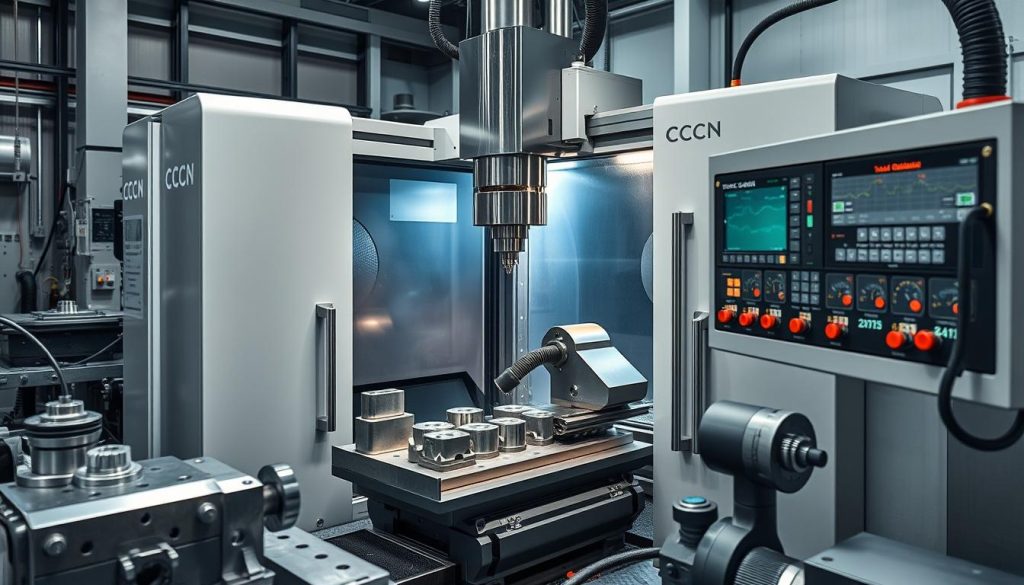
“CNC machining has transformed the way we approach metal fabrication, offering a level of precision and flexibility that was once unimaginable.”
What is Casting?
Metal casting is a key method in making things. It’s about pouring hot metal into a mold. Then, it cools and hardens into the shape you want. This method is used in many fields, like cars, planes, and everyday items.
Definition and Overview of Casting Processes
Metal casting covers many techniques, each with its own use. Die casting uses a mold that can be used many times. Investment casting makes detailed parts with a wax pattern. And sand casting pours metal into a sand mold. Each method has its own benefits, making it great for different needs.
Benefits for High-Volume and Complex Parts
- Casting is great for making lots of parts because molds can be used over and over. This lowers the cost per part.
- It’s also good for parts with complex shapes and details. These can be hard to make with other methods.
- Casting lets makers create parts that are hard or impossible to make with other methods.
For making lots of simple parts or complex designs, metal casting is very useful. It’s a key tool in today’s making things world.
Key Differences Between CNC and Casting
Both CNC machining and casting have their own benefits in metal fabrication. They differ in important ways. Knowing these differences helps manufacturers choose the best method for their needs.
Material Wastage and Cost Efficiency
CNC machining is better at saving materials. It only removes what’s needed, saving money on expensive materials. Casting, however, might waste more material because of its process. It often needs extra steps to get the right shape.
Production Speed and Scalability
Casting is great for making lots of parts quickly. It’s easy to automate and scale up. CNC machining is better for small, precise parts. It offers more flexibility for custom projects.
Surface Finish and Tolerance Levels
CNC machining makes parts with smooth finishes and tight tolerances. It’s perfect for high-precision needs. Casting might have a rougher finish but works well where looks aren’t key.
Choosing between CNC and casting depends on the project’s needs. Consider the output, volume, material use, and finish and tolerance requirements.
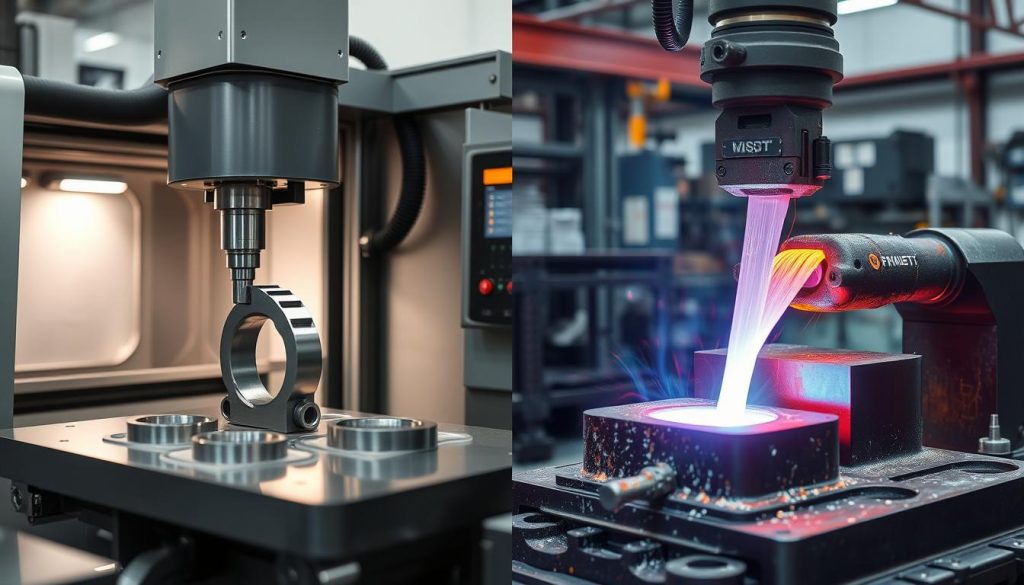
“Understanding the key differences between CNC and casting is crucial for manufacturers to make informed decisions and select the most appropriate fabrication method for their needs.”
Applications of CNC vs Casting
When it comes to metal fabrication, both CNC machining and casting have their own unique applications and advantages. Understanding the strengths of each method can help you make an informed decision for your specific project requirements.
When to Choose CNC Machining
CNC machining is great for prototyping and making custom parts. It’s precise and flexible, allowing for intricate designs with tight tolerances. This makes it perfect for industrial applications needing high-quality, unique components. It’s also good for producing small to medium batches, fitting businesses with changing needs.
When to Opt for Casting Techniques
Casting techniques are best for mass production of parts. They’re often cheaper for big orders because molds can be used many times. Casting is also great for complex shapes that CNC machining might struggle with.
The choice between CNC machining and casting depends on your project’s needs. Consider part complexity, production volume, and material requirements. By knowing the strengths and limits of each, you can choose the best method for your industrial applications, prototyping, mass production, and custom parts needs.
“The key to successful metal fabrication is selecting the right manufacturing process that balances quality, cost, and turnaround time – CNC machining and casting each have their own unique advantages to consider.”
Shixinproto’s Expertise in CNC and Casting
At Shixinproto, we’re proud of our deep knowledge in CNC machining and casting. Our team of skilled engineers and technicians have years of experience. This allows us to offer custom manufacturing solutions for many industries.
Tailored Solutions for Diverse Manufacturing Needs
Need precision parts through CNC machining or complex parts through casting? Shixinproto can handle it. We’re always innovating to deliver top-notch solutions that meet your needs.
Why Shixinproto is Your Trusted Partner for Metal Fabrication
We know your manufacturing needs are special. That’s why we give each project a personal touch. Our team works with you to meet your goals, whether it’s improving efficiency, cutting costs, or enhancing product quality. With our expertise and focus on customer satisfaction, Shixinproto is your go-to partner for bringing your ideas to life.
